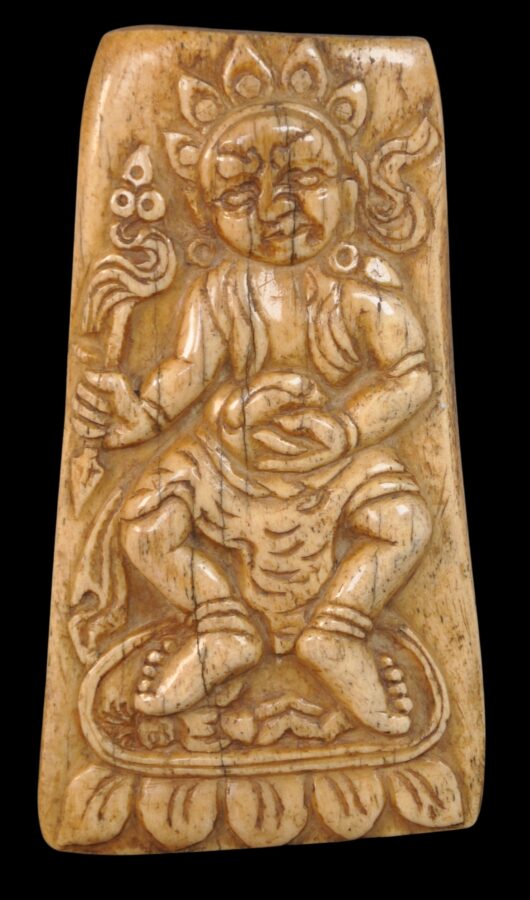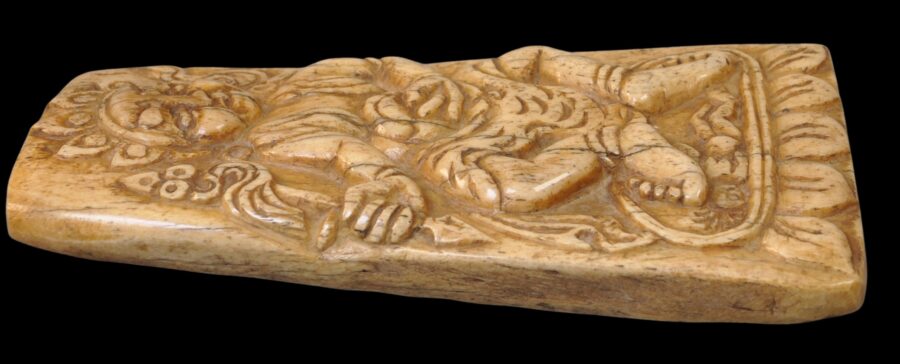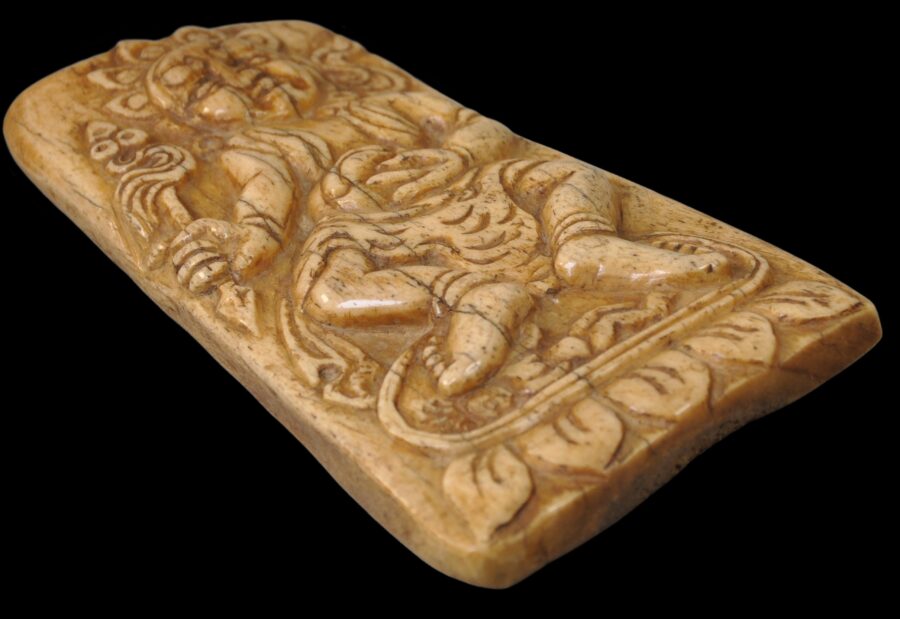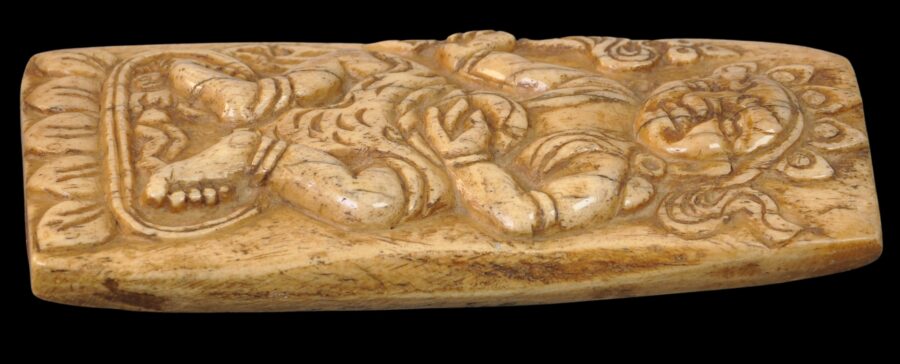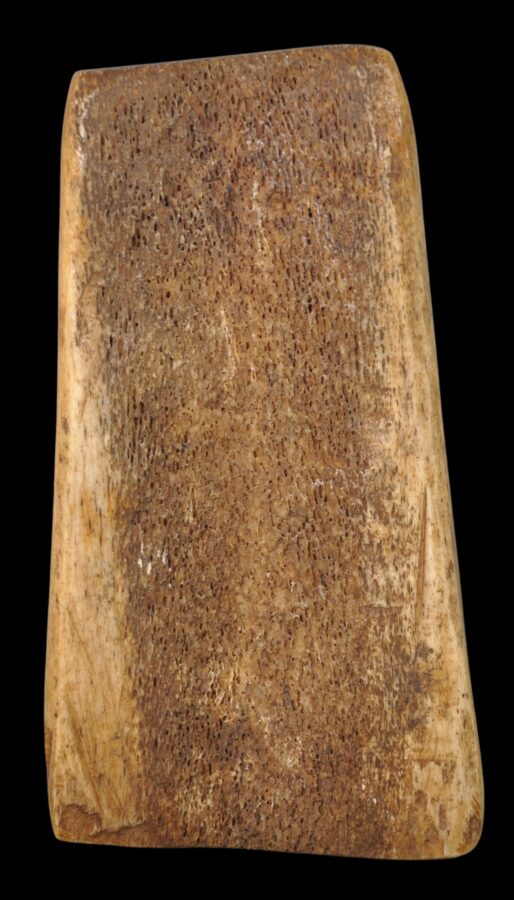Enquiry about object: 9931
Tibetan Bone Plaque of a Terrifying Deity
Tibet, probably Central Tibet 18th century
height: 17.2cm, width: 9.4cm, thickness: 2.5cm, weight: 371g
Provenance
UK art market
This well-worn and thick bone plaque shows a freely-rendered deity dancing on a lotus-petal bed and holding a ritual sceptre in one hand a a skull cup or kapala in the other. A five-leaf diadem adorns the head, along with flowing ribbons. The deity also wears a tiger skin and other jewellery.
He has a grimacing face, large eyebrows, and is plump with limbs that are disproportionately thick.
It is not clear which deity this is, but is one of the many in the Tibetan pantheon.
Pal (1990, p. 217) illustrates a very similar plaque in the Los Angeles County Museum of Art (LACMA) and attributes it to (probably) Central Tibet and with an 18th century dating.
The bone used is particularly thick. It is not human and probably not even yak. Pal (p, 217) posits that it is elephant bone. This would have been traded into Tibet via Nepal, from India. It would have been a valuable material by the time it reached central Tibet.
The plaque is much larger than the usual carved bone plaques seen from Tibet – those that form components of a necromancer’s bone apron or girdle. The carving relates to that seen on natural rocks at religious sites in Tibet.
The plaque has superb wear and patina. It is accompanied by a quality black metal display stand.
References
Pal, P., Art of Tibet, Los Angeles County Museum of Art, 1990.


